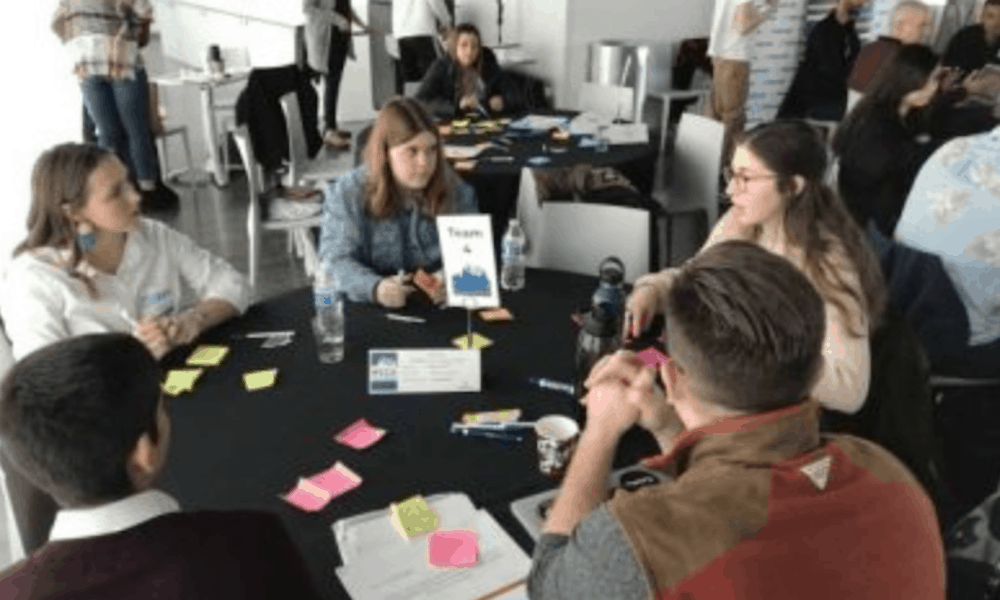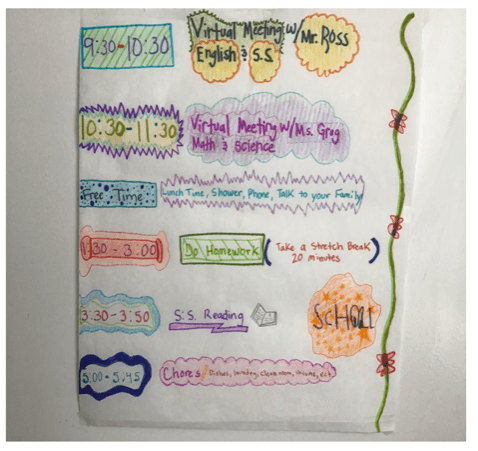As Distance Learning Turns On, Students Increasingly Tune Out

As a classroom teacher, I’ve never felt more loved, respected, and resourced.
My colleagues and I are drowning in free software, enhanced wifi, expanded curriculum, and expert advice more than a month into our nation’s experiment with distance learning.
This kid-in-the-candy store experience is counterbalanced by an overwhelming feeling of indecision driven largely by the paradox of choice.
This apt phrase, coined by psychologist Barry Schwartz in his 2004 book, The Paradox of Choice: Why More Is Less, describes situations in which an abundance of choices does not increase our sense of well being but instead increases our levels of anxiety and can lead to wasted time and depression.
I thought my 15 years of work in the upper echelons of non-profit management at the Buck Institute for Education and the Partnership for 21st Century Learning would have prepared me for a situation in which I could grab all available resources. It didn’t.
So, I opted instead to get really good at the online tools I already had at my disposal, which mostly means developing expertise at Google Classroom and Zoom. That quest has been elevated by a decision to complete Google’s 13-unit online training program and to seek Google teacher certification. Recent software upgrades by Zoom and Google, which includes the nifty integration of Meet into Classroom, have accelerated this process.
In a sense, I have been preparing my students all year for our current crisis by maximizing the resources already at hand. The middle school I teach at provides each of the 400 students with a take-home iPad. We use Google Classroom for content management, Apple Classroom for mobile device management, and PowerSchool as a student information system (SIS). We will, upon request, provide mobile hotspots.
I’m a bit of a data nerd, so back in August of 2019, I began tracking the number of students who were submitting their work via Google Classroom as opposed to those taking the old-school route of paper. The first four months of the year revealed that about 80% of the homework was coming in via paper, and there was no discernible trend related to the academic skills/status of the students who made that choice. On average, my students completed about 50% of the work in any given week.
That data point is tempered by the fact that my students attend a struggling school in a disadvantaged neighborhood in which nearly 70 percent of the students have one or more Fs and upwards of 50% receive language, emotional, or academic support. That was before coronavirus pushed us all into distance learning.
In recent weeks various articles have been posted that cite the dismal levels of online participation nationally among learners. NPR shared a news piece with the glaring headline: 4 in 10 U.S. Teens Say They Haven’t Done Online Learning Since Schools Closed. Not to be outdone, the New York Times ran a piece with the headline: As Schools Moves Online, Many Students Stay Logged Out.
I do not doubt that dismal levels of participation are driven by lack of technology or wifi, inexperience with software or devices, the need to share the device with siblings and parents, lack of safe working space, ill-prepared teachers who need upskilling, and the spectacular contrariness of teens and preteens. I also worry that the message is leaking out that everything students do over these last few months will not count toward grades or graduation. We have been told in my county that online learning and resultant grades can “do no harm” to a student’s pre-coronavirus grade.
As I mentioned, I have a baseline to compare my current online participation levels to those pre-coronavirus. Here’s what I learned:
- During the week of April 6, I assigned a reduced load of four social studies assignments and two English/Language Arts Assignment to my two core classes. The overall completion rate was 41%. The weeks before and after looked much the same.
- During the week of April 6, the highest rate of completion from any class was 53%. Remarkably, my two lowest-performing classes far outpaced the participation rate of my two highest-performing classes. For this, I have no explanation.
- During the first three weeks of distance learning, only 37% of my students joined more than one Zoom meeting or Google Hangout (these are held three times per week on a regular schedule).
- Over the last month, I have been able to reach 91% of my students through some combination of phone calls, emails, direct messages, Google Classroom Stream, or texts. Of the four students who maintain radio silence, three of them had straight Fs before the online migration. This does not bode well for low-achieving students.

As always, I like to turn to the students to hear what they are thinking and feeling about our lengthy experiment with distance learning and the forced quarantine that drives it. I’m requiring my students to keep a Quarantine Journal, built on PowerPoint, in which they use various types of poems to chronicle their feelings. These two poems by sixth-graders Carlos and Anthony encapsulate the emotions we all seem to be feeling. They also give a preview of the extraordinary number of mental and emotional health issues we will face when school finally resumes. If we don’t prepare for those problems it doesn’t matter how much work the students turn in now.
I have two brothers.
We sure dislike each other.
This is our prison.
– Carlos
Quarantined alone.
No way to spend a birthday.
Or any day at all.
-Anthony
For more see:
- Teaching Online in the Time of Coronavirus
- Coronavirus Offers Teachable Moments and Wakeup Call for All Schools
- Six Reasons Why Google Classroom Is A Great Tool for Teachers
Stay in-the-know with innovations in learning by signing up for the weekly Smart Update.
David will be chronicling his return to the classroom in a monthly series of blogs. Follow along.







0 Comments
Leave a Comment
Your email address will not be published. All fields are required.